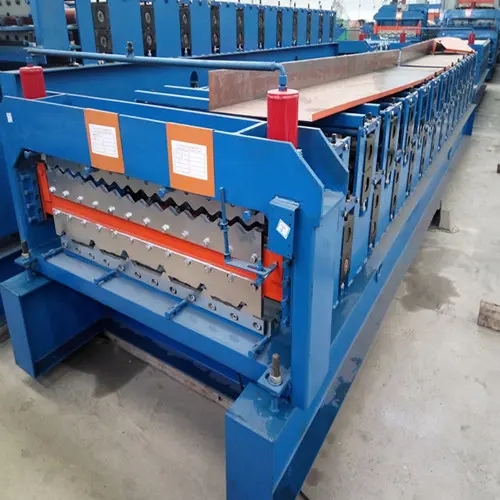
The Advancements and Significance of Drywall Forming Machines
In the construction industry, the importance of efficiency and precision cannot be overstated. One of the key innovations that have transformed the way interior spaces are constructed is the drywall forming machine. This sophisticated piece of equipment has revolutionized the production of drywall, enabling manufacturers to produce high-quality panels at a faster pace while minimizing waste and labor costs.
Understanding Drywall
Before delving into the mechanics of drywall forming machines, it is essential to understand what drywall is. Drywall, also known as gypsum board or plasterboard, is a construction material used to create interior walls and ceilings. It consists of a gypsum core sandwiched between two sheets of heavy paper. Drywall is favored in modern construction due to its ease of installation, cost-effectiveness, and fire-resistant properties.
The Role of Drywall Forming Machines
Drywall forming machines are specialized industrial machines designed to automate the production of drywall panels. They can efficiently create sheets of varying sizes and thicknesses based on specific construction requirements. These machines incorporate several processes, including mixing raw materials, forming, cutting, and drying the panels, streamlining production and ensuring uniformity in quality.
Key Features and Benefits
1. Automation and Speed Traditional drywall production methods involved significant manual labor, which not only increased production time but also led to higher chances of human error. Drywall forming machines automate many of these processes. For instance, automated mixers ensure consistent quality in the gypsum blend, while high-speed forming and cutting systems drastically reduce the time it takes to produce a sheet of drywall.
2. Precision and Quality Control Modern drywall forming machines are equipped with advanced technology, such as sensors and computer controls, which monitor the production process in real-time. This level of precision ensures that each sheet meets strict quality standards, reducing the likelihood of defects and rework.

3. Cost Efficiency By minimizing labor requirements and maximizing raw material usage, these machines contribute significantly to lowering production costs. The automated nature of the process reduces the potential for material waste, aligning with the industry's push for sustainability.
4. Customization Many drywall forming machines can easily adjust to produce different sizes and types of drywall panels. This flexibility allows manufacturers to cater to diverse customer needs, from standard residential applications to specialized commercial constructions.
5. Integration with Other Technologies The latest drywall forming machines can integrate with other manufacturing technologies, including Building Information Modeling (BIM) systems. This integration facilitates better planning and coordination among different stages of construction.
Environmental Considerations
As the construction industry increasingly focuses on sustainability, drywall forming machines play a pivotal role in reducing the environmental impact of producing drywall. By optimizing the use of resources and energy, modern machines contribute to a more sustainable manufacturing process. Additionally, advancements in recycling techniques allow for the recovery of waste materials, further minimizing the ecological footprint.
Conclusion
The evolution of drywall forming machines marks a significant leap forward in construction technology. Their ability to enhance production speed, ensure quality control, and reduce costs makes them indispensable for drywall manufacturers in today's competitive market. As the industry moves towards more sustainable practices, these machines are poised to play an even more crucial role.
In essence, drywall forming machines not only contribute to the efficiency of the manufacturing process but also align with broader trends of innovation and sustainability in construction. Their continued development will likely lead to even more impressive capabilities, ensuring that they remain at the forefront of the industry for years to come. As construction practices evolve, the role of these machines will be pivotal in shaping the interiors of modern buildings and contributing to the architectural landscape of the future.